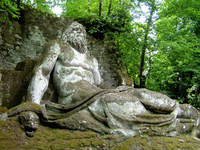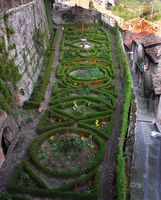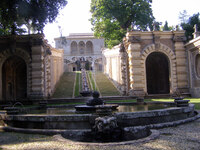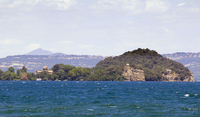In the eyes of many, this is the consummate example of the best period in the history of garden design: the Mannerist phase of the Italian renaissance. It was designed for Cardinal Gambara, who had a modern taste for outdoor living and eating al fresco. The buildings are treated as garden ornaments, illustrating a good principle, and the overall design is attributed to Vignola. It uses the Palladian circle and square. Every aspect of the garden is perfectly proportioned and richly detailed: a square terrace subdivided into smaller squares, a water parterre, a wonderful fountain in a central position. Design ideas are drawn from earlier projects. The geometry was inspired by the Belvedere at the Vatican; the use of water by the Villa d'Este; the circular island echos Hadrian's 'marine theatre' a Tivoli and the isolette at the Boboli. There is an echo too from the Temple of Queen Hatshepsut: terraces command views down a sloping hillside. A grotto sits at the summit of the hill, from which flows water which is full of delight. It does not follow the central axis. Symbolically, the garden represents the tale of humanity's descent from the Golden Age (based on Ovid's Metamorphosis). It has a Grotto of the Deluge. Paths lead to an outdoor dining area with a fountain table, and then to other enclosures. The Water Chain is the best and earliest example of a stepping cascade. The Villa also has a park, now in some disrepair, which had the character of a hunting park but is too small for a hunt.



